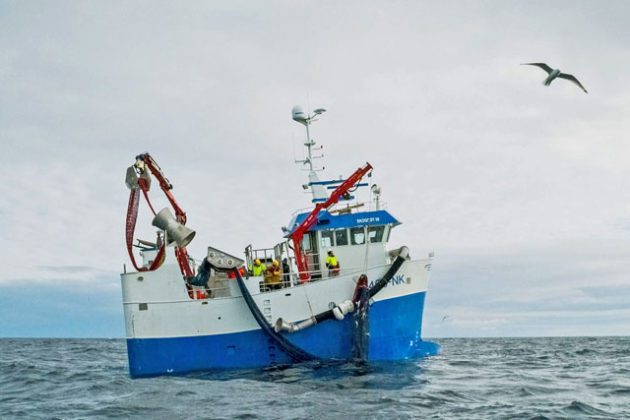The fisheries and fishing industry in Troms and Finnmark is growing

From 2003 to 2020, the catch value in the fishing industry increased from NOK 1.6 billion to NOK 5.2 billion. This increase occurred mostly after 2013.
Together with the analysis bureau Menon Economics, Nofima is now presenting the report “Ripple effects from aquaculture, fisheries and fishing tourism in Troms and Finnmark”. The report was presented at a seminar in Bugøynes on Wednesday.
In Norway, a lot of fishing is seasonal and often concentrated around specific geographical areas. Between 50 and 65 per cent of what is landed in Troms and Finnmark is caught by vessels from the county. This means that Troms and Finnmark accounts for a larger proportion of landings than its share of the fishing fleet would indicate.
More fishermen and vessels
Certain municipalities in Finnmark have experienced positive trends both in the number of fishermen and the number of vessels in recent years. Elsewhere in the country, the number of fishermen has generally declined significantly over time, from well over 2500 in 1983 to around 1200 today. But 1008 fishermen were registered in Finnmark alone in 2010. The uptrend in the number of fishermen is specific to Finnmark and certain municipalities, such as Nordkapp, Gamvik, Lebesby and Vardø stand out. Vardø is notable for having more fishermen in 2019 than it did in 1983.
The fleet in Finnmark has been reduced from around 3200 in the early 80s to around 1130, but, over the last five years, Finnmark has experienced a different trend to the country in general. The number of vessels in Finnmark has increased by 22 per cent. Nevertheless, the increase in the number of vessels is not evenly distributed throughout Finnmark. The largest growth by percentage can be found in Porsanger, where the number of vessels has more than trebled, from 18 to 56. Vardø has more than doubled since 2010, while Gamvik and Lebesby have experienced an increase of around 70 per cent.
More players in the fishing industry
The fishing industry has experienced positive developments in recent years. Last year, the fishing industry employed 1216 people in Finnmark, which is the highest number since the turn of the millennium. The figure is 50 per cent higher than the worst period, which was from 2006 to 2011.
The report also looks at aquaculture, which has had a significant impact on certain municipalities. In Finnmark, Alta stands out with a value creation of NOK 1.3 billion, of which no less than NOK 1.1 billion can be attributed to aquaculture.
Senja the leader in Troms
In Troms, value creation is highest in the Municipality of Senja, with more than NOK 2 billion, of which aquaculture accounts for the largest share here too, with NOK 1.1 billion. Tromsø, Skjervøy and Karlsøy are the other large fisheries and aquaculture municipalities in Troms.
The report also looks at ownership in the aquaculture industry. In short, two thirds of the ownership is Norwegian, while the final third is international. These figures are based on the total volume of fish, not the number of licenses. 16 per cent of shareholders live in Troms and Finnmark.
Contact persons
Research areas
Economy and profitability
Topics
Ripple effects

